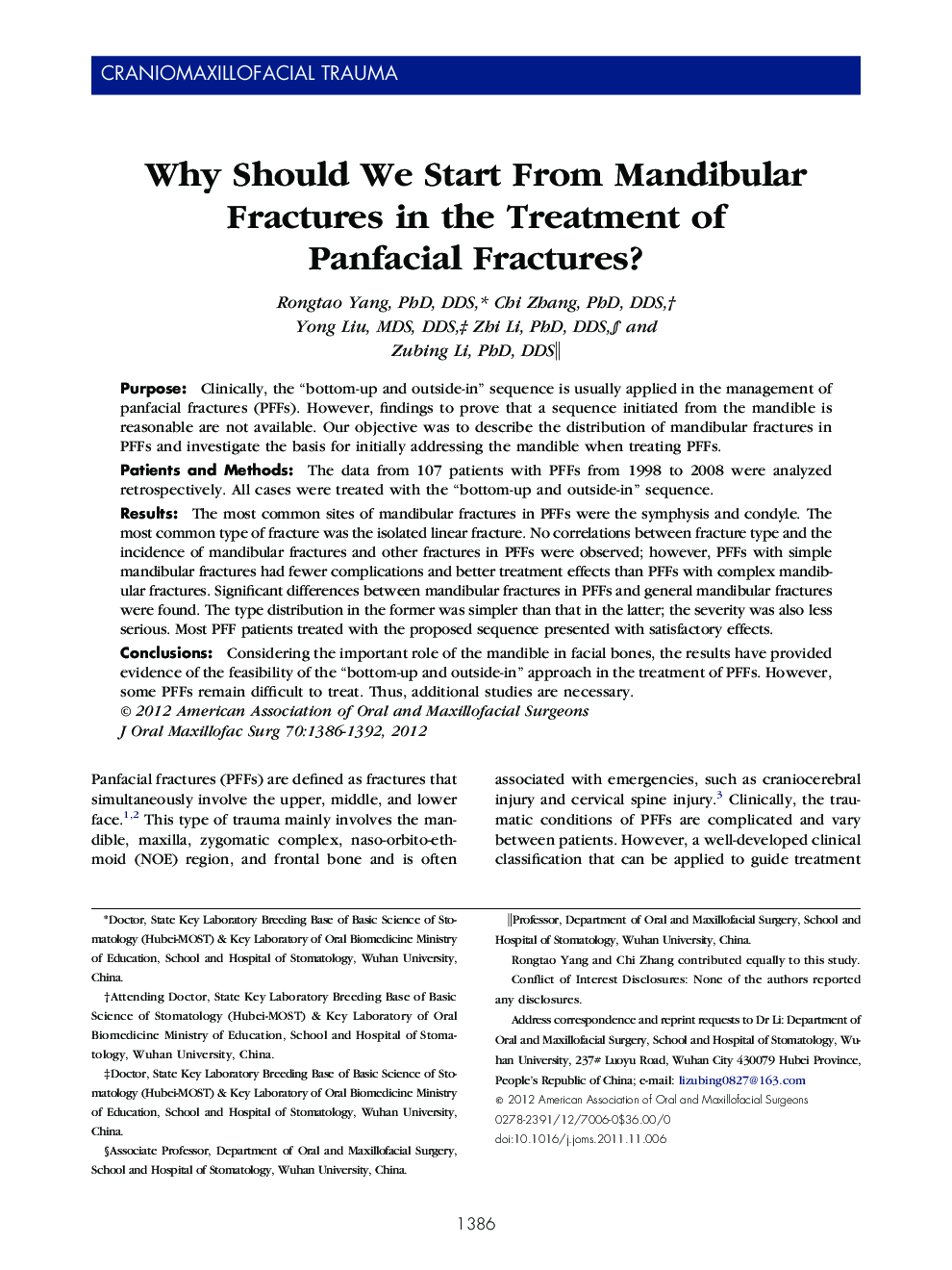| Article ID | Journal | Published Year | Pages | File Type |
|---|---|---|---|---|
| 3153098 | Journal of Oral and Maxillofacial Surgery | 2012 | 7 Pages |
PurposeClinically, the “bottom-up and outside-in” sequence is usually applied in the management of panfacial fractures (PFFs). However, findings to prove that a sequence initiated from the mandible is reasonable are not available. Our objective was to describe the distribution of mandibular fractures in PFFs and investigate the basis for initially addressing the mandible when treating PFFs.Patients and MethodsThe data from 107 patients with PFFs from 1998 to 2008 were analyzed retrospectively. All cases were treated with the “bottom-up and outside-in” sequence.ResultsThe most common sites of mandibular fractures in PFFs were the symphysis and condyle. The most common type of fracture was the isolated linear fracture. No correlations between fracture type and the incidence of mandibular fractures and other fractures in PFFs were observed; however, PFFs with simple mandibular fractures had fewer complications and better treatment effects than PFFs with complex mandibular fractures. Significant differences between mandibular fractures in PFFs and general mandibular fractures were found. The type distribution in the former was simpler than that in the latter; the severity was also less serious. Most PFF patients treated with the proposed sequence presented with satisfactory effects.ConclusionsConsidering the important role of the mandible in facial bones, the results have provided evidence of the feasibility of the “bottom-up and outside-in” approach in the treatment of PFFs. However, some PFFs remain difficult to treat. Thus, additional studies are necessary.
